Amongst the game parks of east Africa antelope always seem to be ever present companions. They are one of those families of mammals that seem to have exploited just about every available habitat available such as the Oryx of the deserts, Bongo of the deep mountain forests and klipspringers of the cliffs and rocky hills. On my recent travels in Kenya it seemed we were never far away from antelope. The savannah grasslands of Africa are the biggest in the world and the diversity of animal life that have evolved to exploit these grasslands is astounding. These multitudes are the reason for the high and diverse predator populations that Africa is famous for. I believe we saw around 15 species of antelope on this trip. I shall show you some of the highlights and try and tell you something interesting about these lovely creatures.
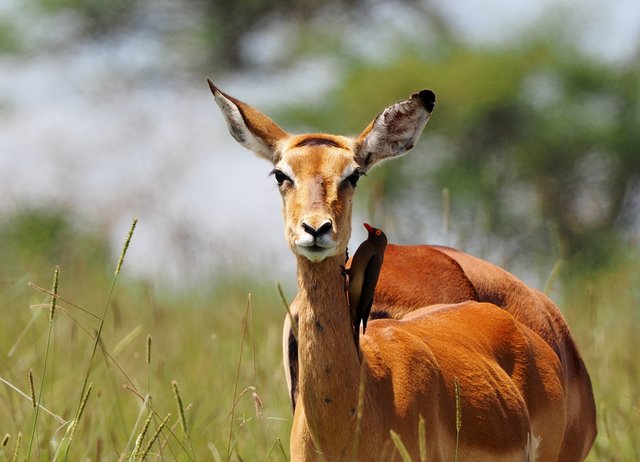
Impala are one of those antelope you see just about everywhere. I recall times in Kenya when there has never been more than a few moments when they have not been in sight. They often form large harem breeding herds of females and young watched over by a territorial male. The territorial males will chase the young males away from the heard as they grow up and these males often go on to form bachelor herds of their own.
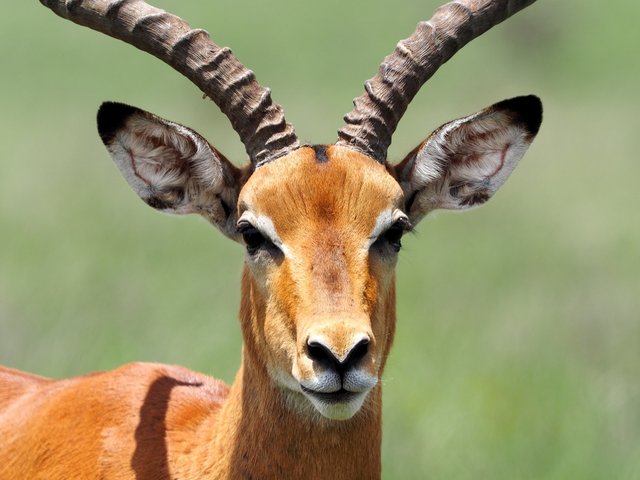
Most antelope species are able to jump great distances but the Impala probably has the greatest jump of them all being capable of jumping over 3 meters high.
At our camp in Tsavo East there was a resident heard of impala living amongst the grounds of the camp. It was a great pleasure to wake up with the heards around us and watch them browsing through the camp although I must admit waking up the sound of the males mating calls is somewhat strange but combined with the dawn chorus of the African morning, my favourite alarm clock, the sound in not unpleasant.
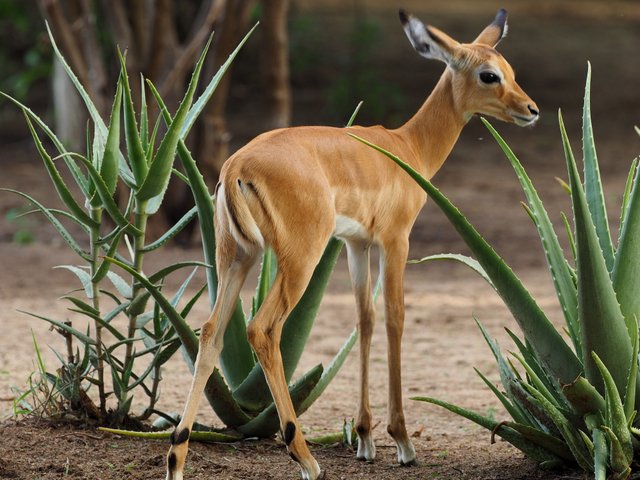
The largest of all antelope is the Eland. Much fewer and far between we still saw several herds of the guys. They appear more cow like than antelope especially with their large dewlap for storing fat for times of need. Large eland will weigh well over half a tone although they always seem to be very docile animals to me.
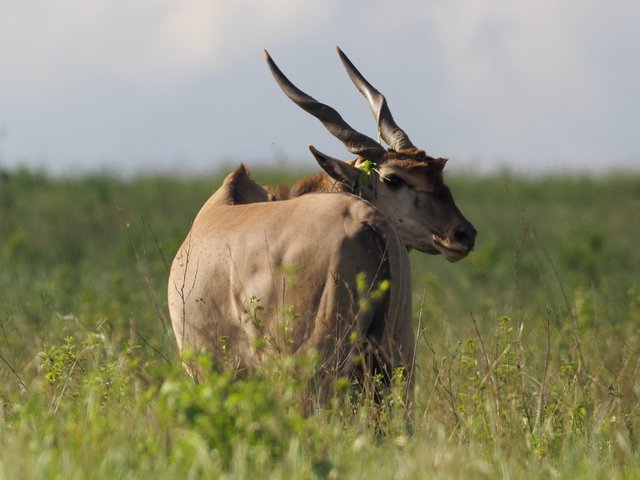
One animal I was eager to see and photograph this trip was the far more elusive klipspringer. These animals are real specialist living in rocky hills, mountains and cliff faces. They have unique downward facing hooves that grip the rock in the same way a rock climber’s shoes do. Those who have seen them climbing what appear to be sheer rock faces can only marvel and their agility, confidence and judgment. They seem to climb up routs where there is nothing to offer them support and leap across large distances over sheer drops with an accuracy and confidence that is awe inspiring to watch.
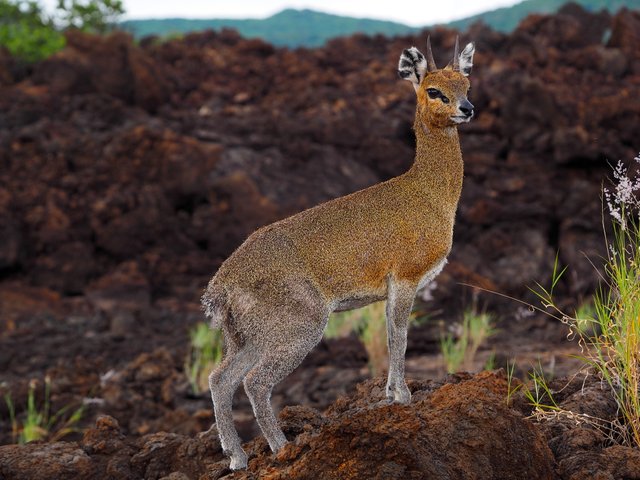
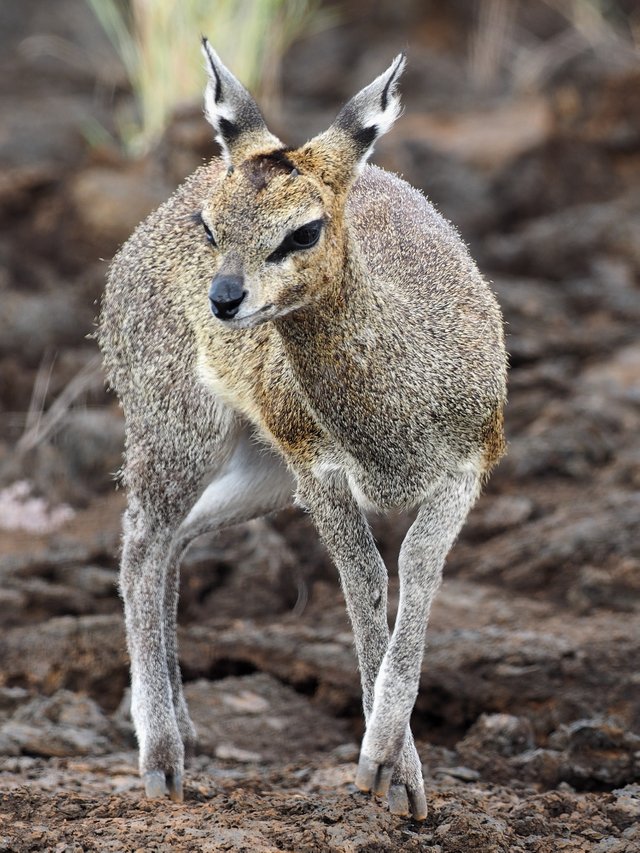
We came across this small family of three in the Shaitani Lava flow in Tsavo West where they calmly allowed us to get close and get a good look at them. That black grove under the eye is the pre orbital gland which many hoofed animal have. It is used to scent mark their surrounding using pheromones and other secretions and you will often see antelope rubbing their faces against objects in their surrounding in order to leave their mark.
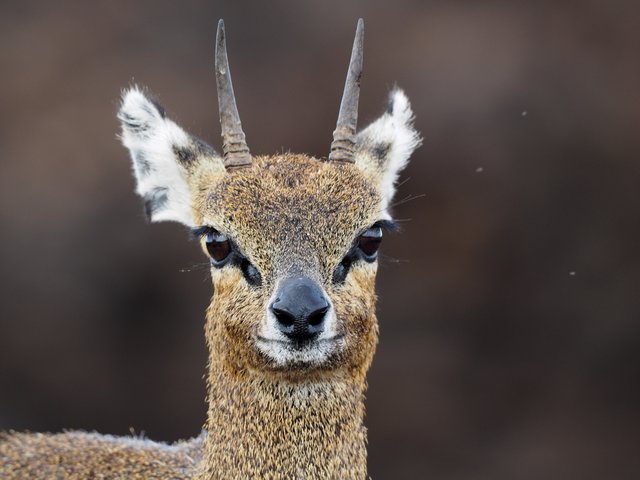
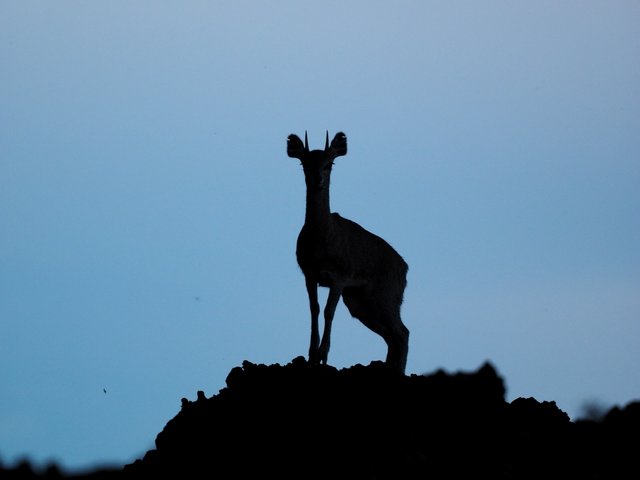
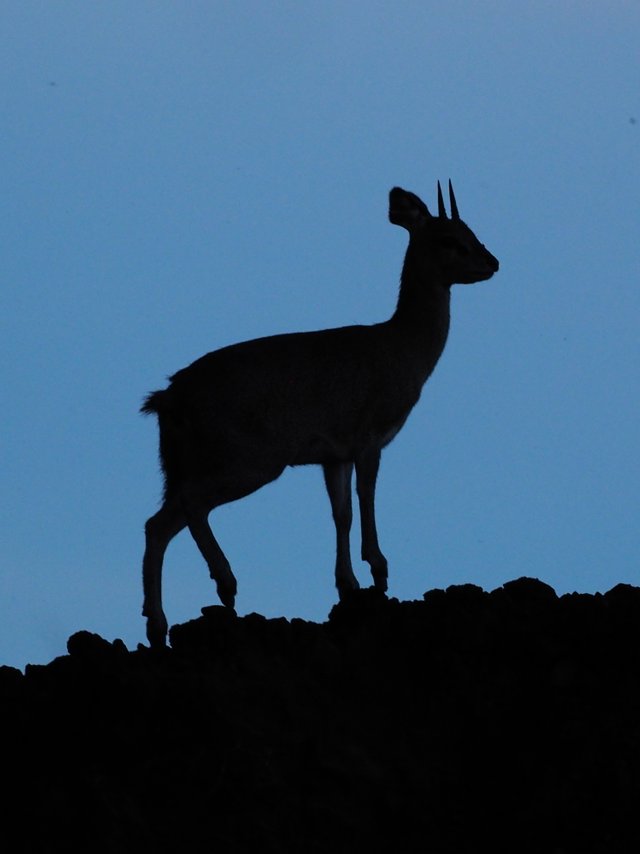
Water buck are another common large antelope often seen. As the name suggests there are usually found in close proximity to permanent water sources. They are regular seen on the lawns of game lodges where they come to graze on the lush grass and in many places are much habituated allowing people to get very close although I prefer to keep my distance as I’m sure an angry waterbuck would be a force to be reckoned with.
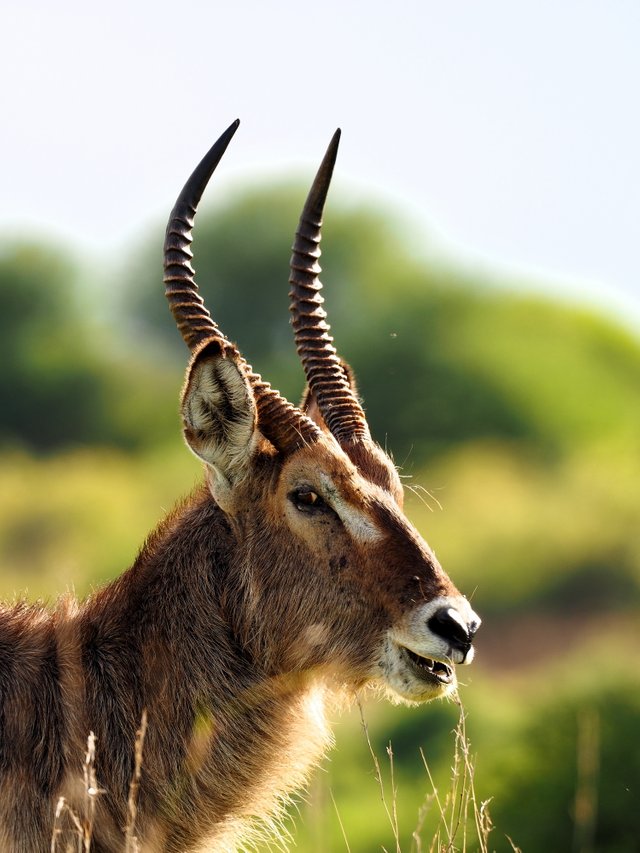
One of my favourite of them all is the majestic Oryx. Oryx are real dry country specialists you will find them out in the deep desert where there seems to be nothing to sustain them. They can smell water from many, many miles away and will cover huge distances to get to fresh vegetation brought to life by the erratic desert rains. They are the only antelope with long spear like horns and there are reputed to defend themselves savagely when threatened. It has been known for people to use their horns as weapons and I certainly wouldn’t want to be at the receiving end of one of those sharp scimitar horns.
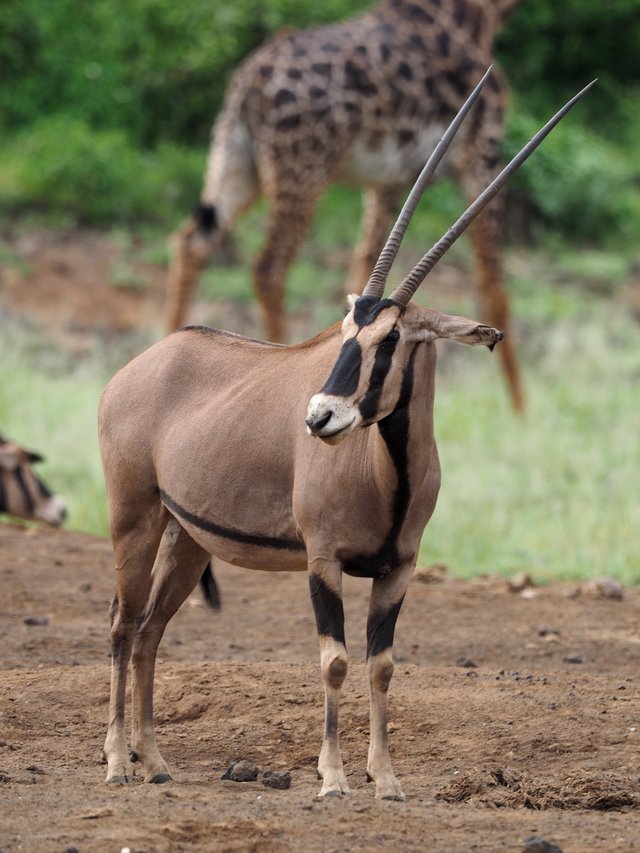
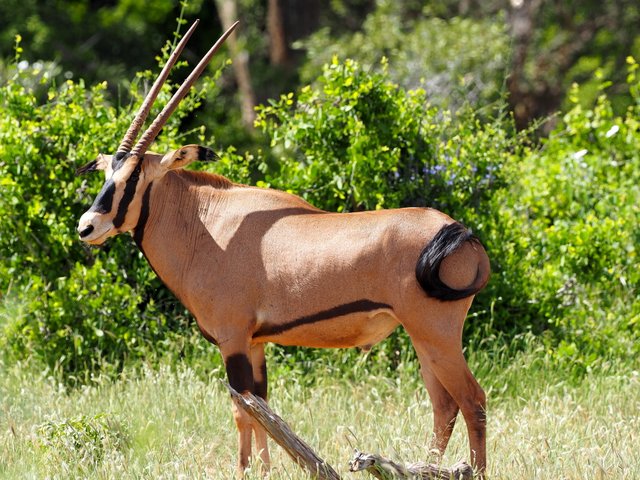
One of the smallest and most common antelope in Tsavo was the dainty dik-dik. These tinny guys where everywhere, usually seen in mating pairs. These monogamous pairs will stay with each other for many years. They use communal dung middens to mark their territory, like this one below, as well as scent marking. There is a funny legend about their midden piles that one day a dik-dik was running from danger when it tripped over some elephant droppings, there elephant laughed at the dik-dik and so now the dik-dik gather their dropping in one place in the hope someday the elephant shall trip over it and they shall have their revenge!
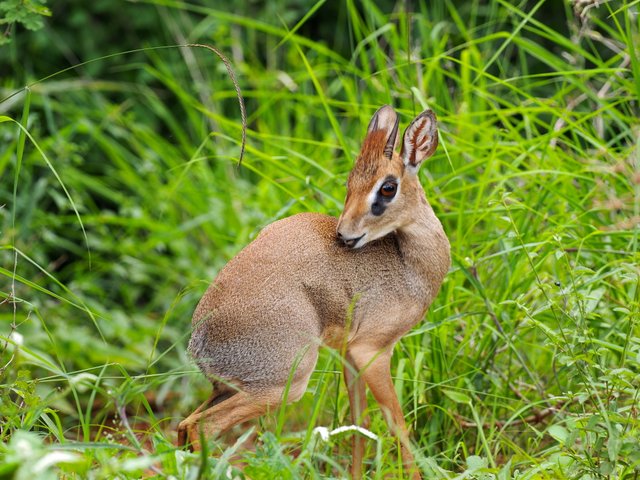
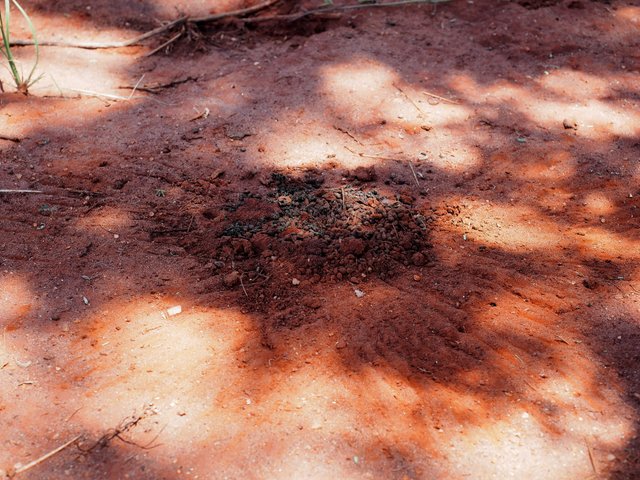
Being small they rely on their speed and agility to escape danger but there are many things that would like to eat them like this martial eagle we came across who had just killed one.
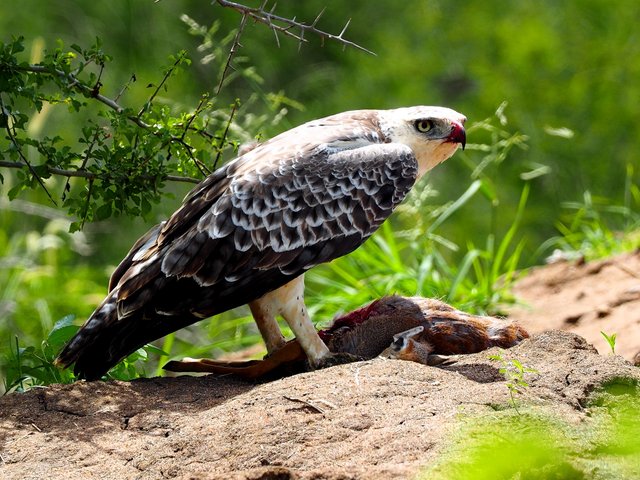
Gazelle are the classic small antelope of the plains and a particular target of cheetah, hence their amazing speed! These pictured here are Grant’s gazelle. They form very similar social groups to the impala we have already taken a look at.
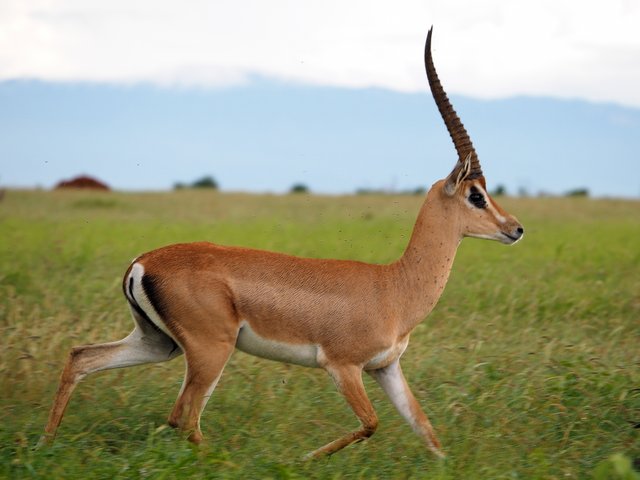
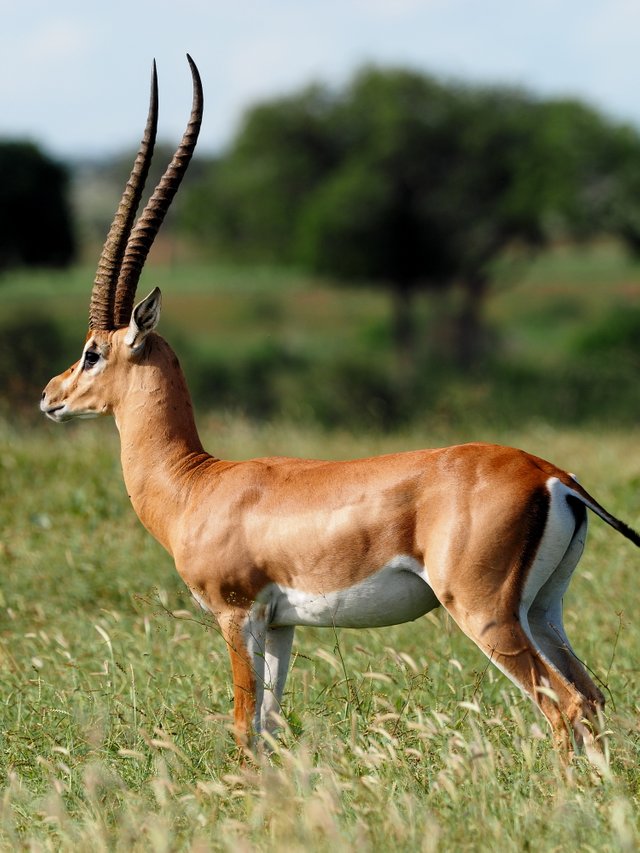
When their young are born the mothers often leave them hidden in the grass where they are very good at crouching down and disappearing. You will often see jackals patrolling near the breeding herds in the hope of finding one of these fawns hidden in the grass.
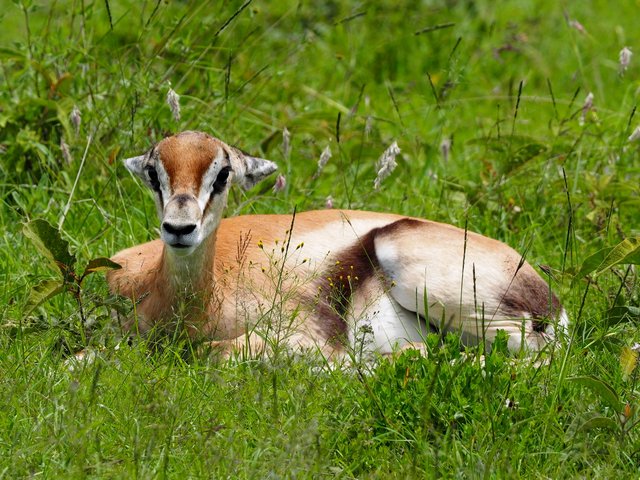
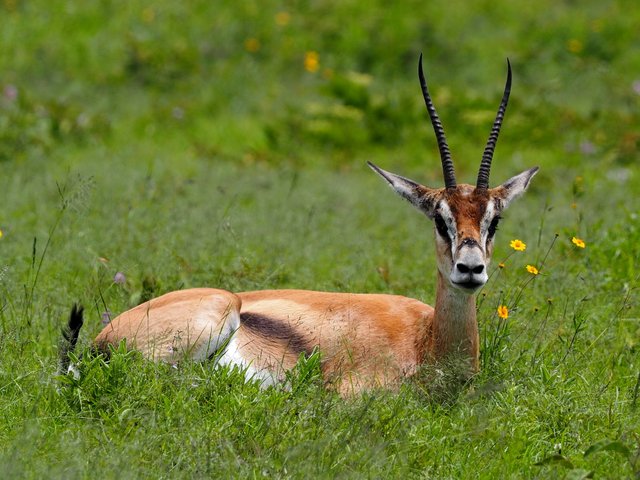
Bushbuck are one of those secretive forest and woodland animals they you often get a glimpse of amongst the trees before they disappear into the vegetation. We were very lucky with this close view of a male in Nairobi national park. He seemed unbothered by our close proximity which is odd as they are usually quite secretive. The females are quite different in appearance to the males with their lack of horns and much paler colour and white dots on their coat.
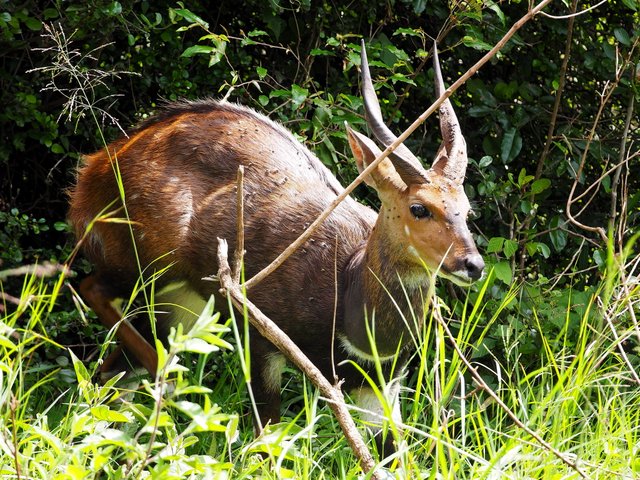
Another animal I never tire of seeing are Kudu. The ones we saw in Tsavo are the lesser kudu, much smaller than their regal cousins the greater kudu. Lesser kudu are another animal that never seem to like being near people always seeming on edge. I love the beautiful marking on their faces and the white stripes on their body. You can often judge the age of the males on the size of their corkscrew horn where the old males will have up to three loops, the female on the other hand are hornless. They tend to be seen in small family groups near rivers in arid environments.
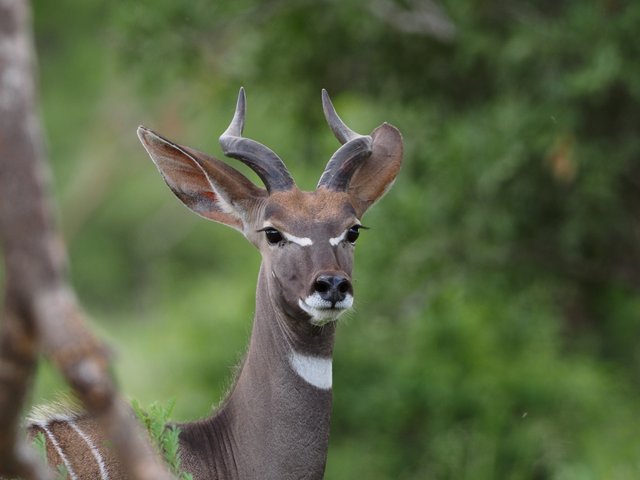
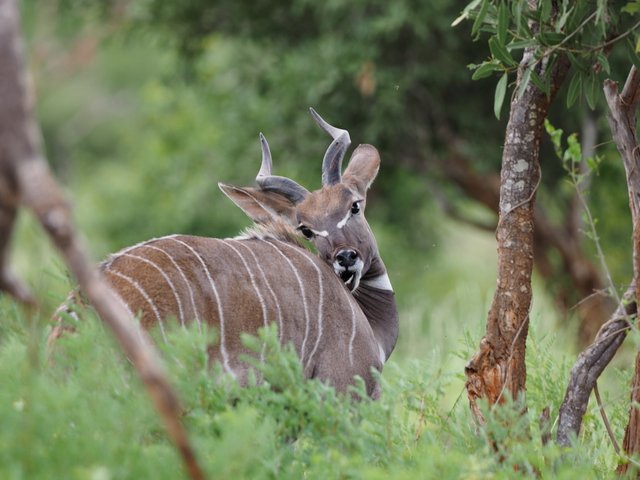
Reedbuck are easily identified by the distinct black spot beneath their ear. As the name suggests there usually found near reed beds around permanent water and although I have seen are fair few of them my sighting seem to be few and far between and I don’t think I can ever recall seeing more than one of them at a time and I have never had much time to observe them before they move away.
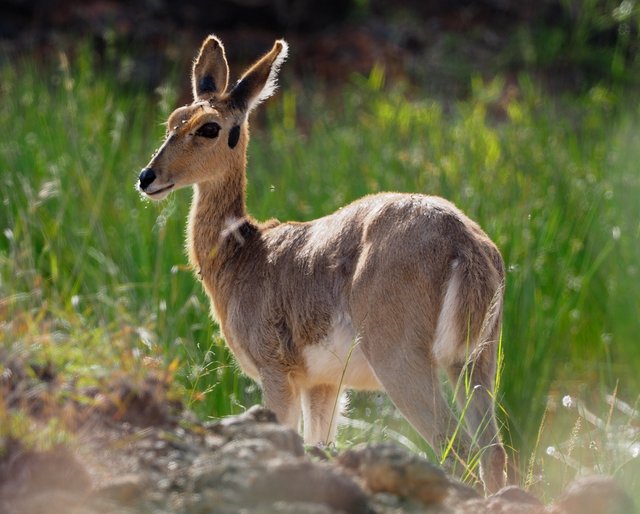
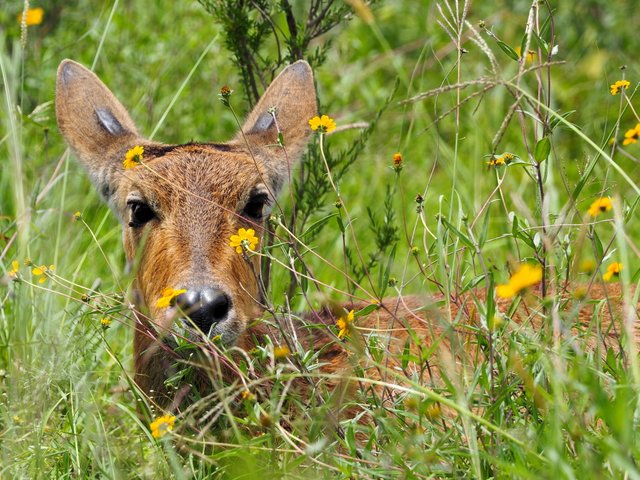
I was hoping to get good picture of gerenuk this trip but the few we saw where at long range. They are another true dry country animal and they get all their water requirements from the plants they eat so they never need to drink. They have evolved very long necks in a similar way to the giraffe and are classically seen on their hind legs reaching up high into the bushes to get at the leaves they eat. I remember reading that you can tell the kind of environment a mammal lives in by looking at their kidneys under a microscope, the kidneys of desert animals have a very long feature called the loop of henle which is a section of the nephron where water is reabsorbed from the urine, the longer the loop the more arid the climate is where the creature lives.
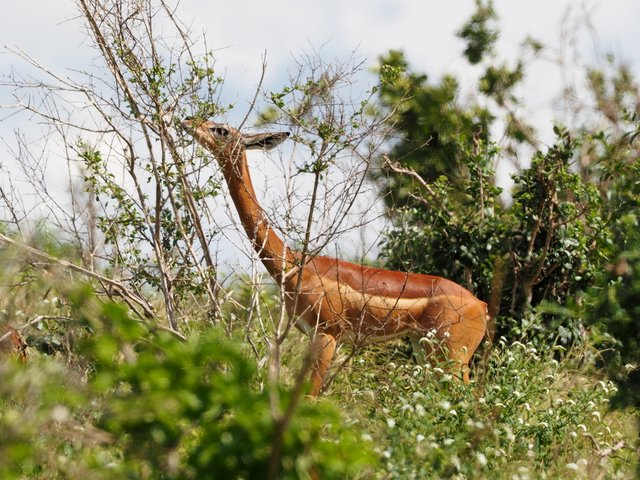
The last antelope here is the Kongoni, a type of hartebeest, the joke in my family is that are not very cleaver which may be a bit unfair, but they do give the impression of not much going on behind the scenes. They have unusual shaped horns distinctive to the hartebeest and the females are very similar in appearance to the males. Where the conditions are right they will form huge herds many thousand strong although they don’t tend to migrate large distances like their cousins the wildebeest.
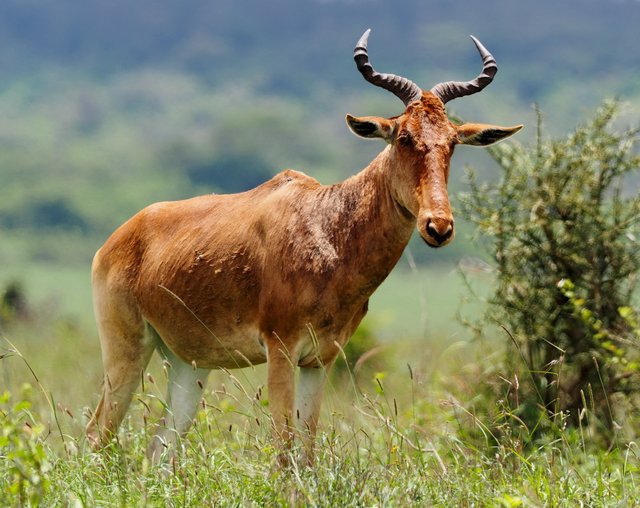
Thanks if you made it to the end! Hope you enjoy ;)
I think I am your biggest fan here :D
Downvoting a post can decrease pending rewards and make it less visible. Common reasons:
Submit
Thanks Milos! That means alot to me :D
Downvoting a post can decrease pending rewards and make it less visible. Common reasons:
Submit
Whoa. So great! I'm speechless...
Downvoting a post can decrease pending rewards and make it less visible. Common reasons:
Submit
Cheers Gin! I'm happy you liked it :-) Are you from Indonesia?
Downvoting a post can decrease pending rewards and make it less visible. Common reasons:
Submit
Yes, I'm from Indonesia :D
Downvoting a post can decrease pending rewards and make it less visible. Common reasons:
Submit
I enjoyed your animal pictures a lot
Downvoting a post can decrease pending rewards and make it less visible. Common reasons:
Submit
Thank you @makesushi!
Downvoting a post can decrease pending rewards and make it less visible. Common reasons:
Submit
Congratulations! This post has been upvoted from the communal account, @minnowsupport, by timspawls from the Minnow Support Project. It's a witness project run by aggroed, ausbitbank, teamsteem, theprophet0, someguy123, neoxian, followbtcnews, and netuoso. The goal is to help Steemit grow by supporting Minnows. Please find us at the Peace, Abundance, and Liberty Network (PALnet) Discord Channel. It's a completely public and open space to all members of the Steemit community who voluntarily choose to be there.
If you would like to delegate to the Minnow Support Project you can do so by clicking on the following links: 50SP, 100SP, 250SP, 500SP, 1000SP, 5000SP.
Be sure to leave at least 50SP undelegated on your account.
Downvoting a post can decrease pending rewards and make it less visible. Common reasons:
Submit
Resteemed by @resteembot! Good Luck!
Check @resteembot's introduction post or the other great posts I already resteemed.
Downvoting a post can decrease pending rewards and make it less visible. Common reasons:
Submit
I'm traveling to South Africa for a safari trek. I hope to see all those antelope! Thanks for sharing. Ira
Downvoting a post can decrease pending rewards and make it less visible. Common reasons:
Submit
You're welcome @irakrakow. I hope you see lots!
Downvoting a post can decrease pending rewards and make it less visible. Common reasons:
Submit
I visited Kenya in 1970 and toured Nairobi Game Park. Saw lions, elephants, and of course antelope. Definitely an exciting experience.
Downvoting a post can decrease pending rewards and make it less visible. Common reasons:
Submit